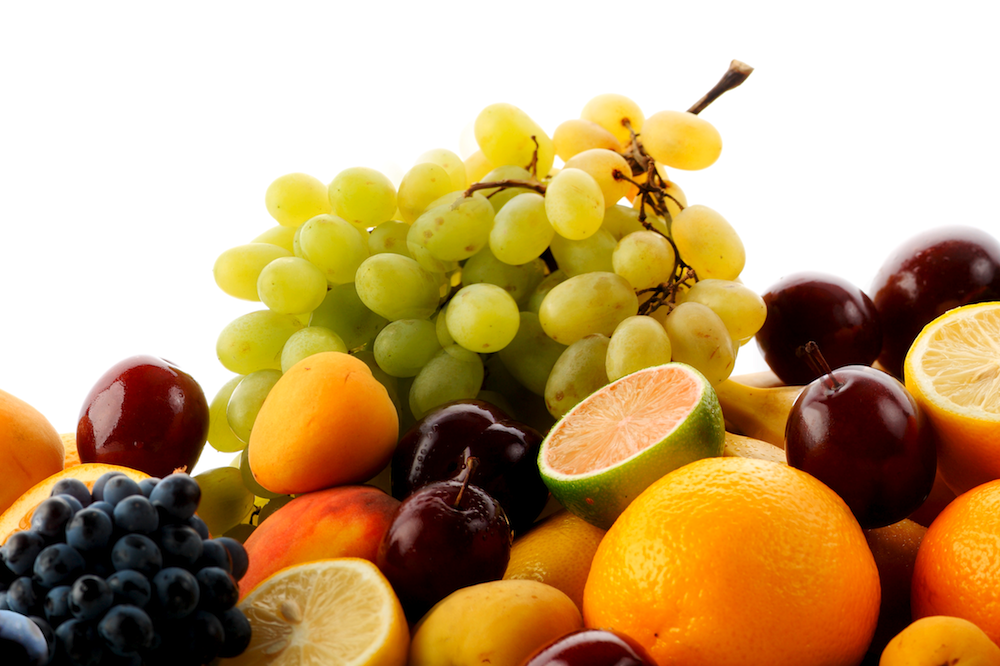Everyone has a favorite fruit. With an abundance of options, it’s impossible not to! There is nothing better than eating a bowl of fruit in the middle of summer, with cicadas buzzing softly and the stresses of the school year dripping away from the hot sun. Although fruits are high in natural sugars, they make for a nourishing and fulfilling alternative to highly processed and addictive foodstuffs found in the supermarket. With each season, different fruits become available, which makes for an exciting time to enjoy long-forgotten favorites. So without further ado, here is my ranking of some of the most popular fruits.
Starting at the very end, my least favorite fruit would have to be watermelon. While a fan favorite, it’s just painfully overhyped. It’s an extremely lackluster fruit and very impractical to cut up. Not only is it difficult to cut, but it’s very messy. Due to its water nature, watermelon juice gets everywhere, which can be good to put in water but that’s about it. The flavor is most likely the worst part of it. Watermelon tastes like water-soaked styrofoam. It’s the LaCroix of fruit, considering it has no taste. Even though it’s a pretty mid fruit, it does hold many vitamins as all fruits do. Watermelon has three vitamins that allow the consumer’s skin to stay soft and young: A, B6, and C. The fruit water content also allows for good hydration—a price to pay for its soggy styrofoam texture.
Pears are coming in second-to-last place. The texture of the flesh of a pear is very strange, kinda crunchy, and chunky in an unattractive way. They also look weird. In addition to the strange texture, they are messy and though they are advertised as handheld fruit, they cannot be eaten like that unless the eater has access to a sink close to them. Pears are very juicy in a dribbly way, which means when the consumer takes a bite, the juices go everywhere but in their mouth. Eating a pear is a sticky mess, leaving the eater feeling like an iPad kid. Pears are sweet and taste well enough to be added to dishes for enhancement. They go well in pies with caramel and cinnamon.
Though a common fruit, oranges are third-to-last. They just have a terrible texture, with the skin of the flesh almost unbearable to consume. As well as that, peeling an orange can be very irritating if one isn’t educated on the orange peeling process. The flavor of an orange is wonderful but only in juice form. Only acceptable form that I will consume oranges in.
Next up is going to be peaches, which are pretty similar to pears. They are extremely messy fruits and tend to make a large, sticky, juicy mess regardless of how they are eaten. Even cutting them up isn’t a good solution, as their skin doesn’t break easily, not letting small bites be taken. The skin is most likely the worst part of the peach. With a fuzzy and slimy texture, the skin is just inedible. Even though they are very messy and the skin is nasty, the fleshy part of the fruit is very sweet and juicy but that’s where the good ends! They do make very good pies and cobblers though.
Right after peaches are going to be nectarines. I placed these a spot higher than peaches because they are essentially just non-fuzzy peaches. Everything about the two is the same besides the skin. These also make good pies and cobblers!
After nectarines, kiwis take their place. Though they are cute birds, they do not make good fruits. They are essentially impossible to peel unless large chunks of the flesh are taken out with the skin or pieces of the skin are still left on. They are awkwardly shaped and not a practical snack. With non-removable skin, they aren’t a good on-the-go snack nor are they a good handheld snack. Their flavor makes it nearly impossible to enjoy unless added to a mixed fruit bowl with an assortment of other fruit to balance out the kiwi’s intense tartness. The seeds in the kiwi also get stuck in teeth crevices easily, leaving the consumer irritated.
In the same family as peaches and nectarines, plums are placed here. Again, they are almost identical to nectarines except plums tend to be more sour.
Cantaloupe gets stuck in the next spot. They have a sweet flavor when ripe and are a juicy melon. Cantaloupe is much better than watermelon by a long shot due to its sweet and existent flavor and tender texture.
Another fan favorite, blueberries gets placed before cantaloupe. Like kiwi’s, they taste good when added to a large fruit bowl but on their own, they do not taste that good. There are two types of blueberries, the really small tart ones, typically a purple or dark blue color, or the mushy ones, which are very much unripe. Similarly, blueberries either have a lot of flavor, leaving the consumer’s mouth sweetly tart, or no flavor with a mushy texture. Not only are they inconsistent with texture and taste, but they are high in fiber, meaning that if too many are consumed, a bathroom must be found soon.
Next up is honeydew. This melon has a texture similar to the crunchy rind of a watermelon but a sweeter taste. They typically have a sort of floral and honey-like flavor, which is where they get their name from. Clears the other two melons by a mile.
After honeydew, bananas are going to take their place. Even though they are nutrient-rich, they don’t taste that great. The flavor of a banana is very distinct and hard to describe, but they aren’t the worst-tasting fruit. The artificial banana is way worse than the actual banana flavor. They also go bad fast, which may benefit some if they enjoy baking banana bread or muffins. Bananas can be kept in the freezer to be used for various things, like smoothies or banana bites. They are also a good on-the-go snack.
Next is raspberries. Though they are a refreshing little snack, raspberries are also a bit flavor lacking. They do make a good light snack in the summer time though. Raspberries also are good for drinking an impractically small amount of water out of or putting them on your fingertips as though they are claws.
Another basic fruit is grapes. There are two different types of grapes, both of which are very different from the other. Green grapes are more sour and crunchy, with a flavor that is best for hot days. Red grapes are sweet and a bit softer, which are better for folks with sensitive teeth. As well as that, grapes grow on an edible vine! When a grapevine is found in the wild, it can be eaten to give the same flavor as eating a grape.
After grapes, blackberries are placed. Similar to raspberries, they are juicy little snacks good for summer. The difference between blackberries and raspberries is the flavor. Blackberries have a flavor that is a mixture of sweetness and tartness that balances out wonderfully. They are also very juicy and feel like a bunch of little boba bubbles in one’s mouth.
While many may disagree with this placement, hear me out. Strawberries are very overhyped and when store-bought, have almost little to no flavor with no juice factor. Store strawberries are always slightly unripe and it’s very disappointing. Also, the strawberry artificial flavor tastes nothing like real strawberries, which is very irritating. The only time strawberries taste good is on a hot summer day after being in the pool when one goes out to a strawberry field and eats the warm strawberries that are slightly overripe, or when they are store-bought in season.
Cherries no doubt are up next. Cherries have an intense grip on society that I believe will continue for a while. Almost everything has a cherry flavor, and it always tastes so much better than the original. Cherries can either be a sweet treat or a tart snack and there is no in-between. The most irritating part of eating cherries is the pits in the middle of them, as well as the stems. This forces the consumer to have two bowls, one to hold the cherries, and one to hold the cherry remains. They are a very nice summer snack though and can be pitted with a cherry pitter since store-bought cherries with no pit always taste a bit watery. Cherries also taste amazing in a pie.
After cherries, pomegranates are placed. This is non-negotiable. A fruit that is worth the wait, pomegranate is an amazing fruit that gives small but mighty bursts of flavor with each seed, which is juicy and also crunchy. The seeds have a bitter aftertaste almost similar to cranberries but it is quite delightful.
While some may argue that this fruit is up too high, grapefruit will continue to be a great snack. Though hefty, these fruits are an amazing citrus alternative to oranges. A whole medium grapefruit provides the human body with 100% of the daily requirement for vitamin C. These can be eaten for breakfast and the bitter taste can be cut with a light sprinkling of brown sugar over the top.
Second place goes to mango, which is one of the best fruits hands down. The embodiment of summer in a fruit, mango tastes like a tropical paradise. The sweet and floral taste of mango allows for it to easily be a top fruit. The texture is best compared to a creamy jelly almost. The only irritating part of eating mango is peeling it and removing the pit, which can be difficult due to the fibers on it, but certainly worth the hassle.
And my number one fruit is of course going to be apples. A classic fruit and a reliable snack that comes in a large variety of flavors and textures and can be used in many different ways. Depending on what one is looking for, there will for sure be an apple that fits the description. Fuji is perfect for a sweet treat, while golden delicious has a more mild flavor. Granny Smith brings a tart firmness to the table, while Mutsu apples have a tangier flavor that’s favorable for salads. There are so many different types of apples that can be used for various purposes. It’s the perfect snack for busy days, as it’s a grab-and-go type of fruit. Apples can also be paired with a dip of some sort, like Nutella or peanut butter or even whipped cream with cinnamon.
No matter what, fruit will always be one of the best snacks for every season. They are all rich in nutrients and vitamins and are a great sugary dessert alternative!














